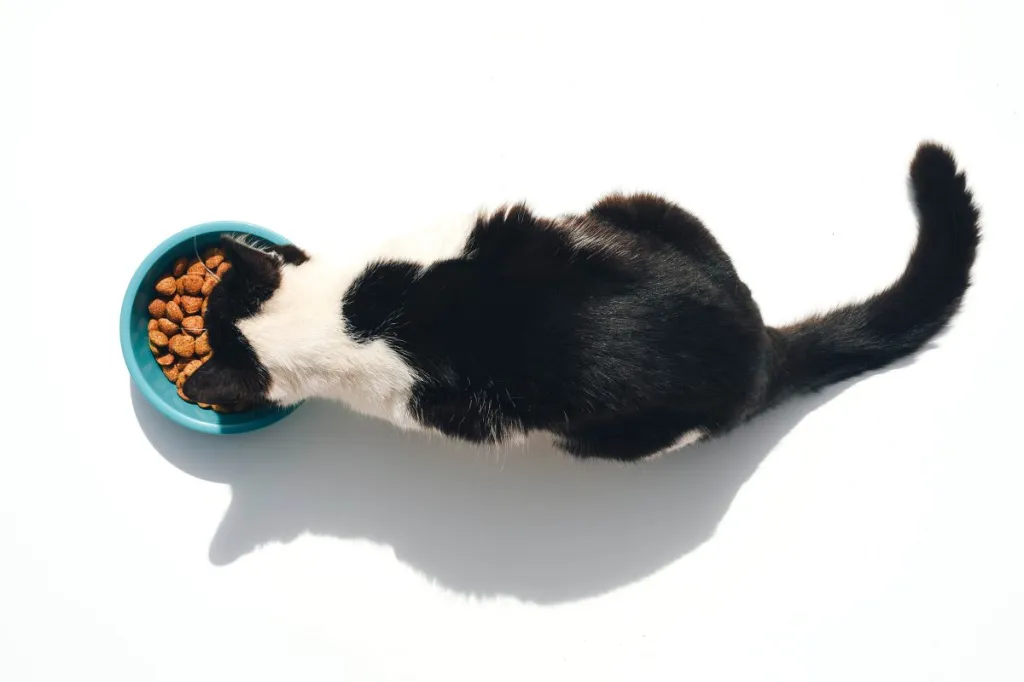Introduction
Welcome, fellow feline aficionados, to the ultimate guide on cat food and nutrition! As a proud cat parent or an aspiring one, you’re undoubtedly concerned about providing the best care for your whiskered companion. Fear not, for I’m here to guide you through the labyrinth of cat food choices, ensuring your furball gets the nutrition they need to thrive.
Understanding Cat Nutrition
Before diving into the world of cat food, it’s essential to grasp the basics of feline nutrition. Cats are obligate carnivores, meaning their diet primarily consists of meat. Unlike their canine counterparts, cats require specific nutrients like taurine, arachidonic acid, and vitamin A that are found abundantly in animal tissue. Therefore, a diet rich in high-quality animal protein is paramount for their health.
Choosing the Right Cat Food
Now that you know what makes a cat’s heart (and stomach) sing, let’s explore the different types of cat food available:
Dry Cat Food (Kibble)
Often a convenient and cost-effective option, dry cat food provides essential nutrients and helps promote dental health by reducing tartar buildup. However, it’s crucial to select a high-quality kibble with animal protein as the primary ingredient and minimal fillers.
Wet Cat Food
With its higher moisture content, wet cat food can help keep your kitty hydrated, especially if they’re not fond of drinking water. Look for options that feature real meat as the main ingredient and avoid those laden with artificial additives or excessive carbohydrates.
Raw Food Diet
Advocates of raw feeding argue that it closely mimics a cat’s natural diet in the wild. Raw diets typically consist of uncooked meat, bones, and organs. While this approach can provide excellent nutrition, it’s essential to handle raw food safely to prevent contamination with harmful bacteria like Salmonella.
Homemade Cat Food
Crafting homemade cat meals allows you complete control over the ingredients, ensuring your cat receives optimal nutrition. However, formulating a balanced homemade diet requires meticulous attention to detail and consultation with a veterinary nutritionist to prevent nutrient deficiencies.
Decoding Cat Food Labels
Navigating the labyrinth of cat food labels can be perplexing, but fear not! Here’s a handy guide to decipher those cryptic labels:
Ingredient List
Ingredients are listed in descending order by weight, so ensure the first few ingredients include high-quality animal protein sources like chicken, turkey, or fish.
Guaranteed Analysis
This section outlines the minimum percentages of crude protein, fat, fiber, and moisture in the food. Look for values that align with your cat’s nutritional needs.
AAFCO Statement
The Association of American Feed Control Officials (AAFCO) sets standards for pet food. Ensure the food meets AAFCO nutrient profiles for your cat’s life stage (e.g., kitten, adult, senior).
Understanding Cat Food Labels
Special Dietary Considerations
Just like their human counterparts, cats may have unique dietary requirements or health conditions that necessitate special consideration:
Weight Management
Obesity is a common issue among domestic cats, leading to various health problems. Opt for weight management formulas or portion-controlled feeding to help your cat maintain a healthy weight.
Food Allergies
Cats can develop allergies to certain proteins or ingredients in their food. If you suspect your cat has a food allergy, consult with your veterinarian to conduct an elimination diet or recommend hypoallergenic formulas.
Medical Conditions
Cats with medical conditions like kidney disease or diabetes may require specialized diets tailored to their specific needs. Your veterinarian can prescribe therapeutic diets to manage these conditions effectively.
Tips for Feeding Your Cat
Feeding your feline friend goes beyond simply pouring kibble into a bowl. Here are some tips to ensure mealtime is a purr-fectly delightful experience:
Portion Control
Avoid overfeeding by following feeding guidelines provided on the cat food packaging. Adjust portions based on your cat’s age, weight, activity level, and metabolism.
Meal Frequency
Kittens require more frequent meals than adult cats, typically feeding 3-4 times a day. Adult cats can thrive on two meals a day, while senior cats may benefit from smaller, more frequent meals.
Hydration
Encourage adequate hydration by providing fresh water at all times, especially if your cat consumes dry food exclusively. You can also incorporate wet food or water fountains to entice them to drink more.
Avoid Free-Feeding
While convenient, free-feeding can lead to obesity and unhealthy eating habits. Instead, establish a regular feeding schedule and remove uneaten food after a designated period.
Conclusion
Congratulations, dear reader, on embarking on this enlightening journey into the realm of cat food and nutrition! Armed with this newfound knowledge, you’re well-equipped to nourish your feline friend with the love and care they deserve. Remember, a balanced diet is the cornerstone of your cat’s well-being, so choose wisely and watch them thrive in health and happiness. So go forth, fellow cat enthusiasts, and may your cat’s bowl always be filled with the finest fare fit for feline royalty!
- Best Dun & Bradstreet (DNB) Alternatives for 2025 - April 19, 2025
- Best 6sense Alternatives for 2025 - April 18, 2025
- Best Instantly.ai Alternatives for 2025 - April 18, 2025



